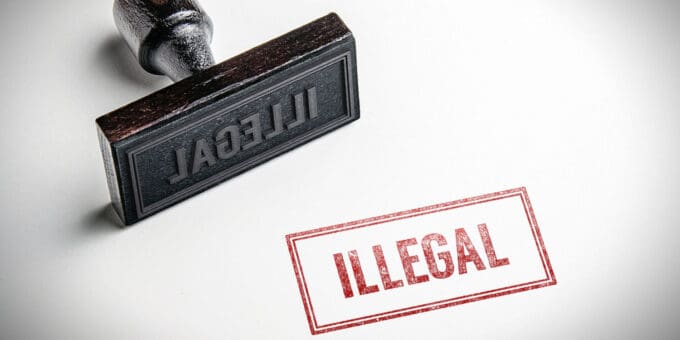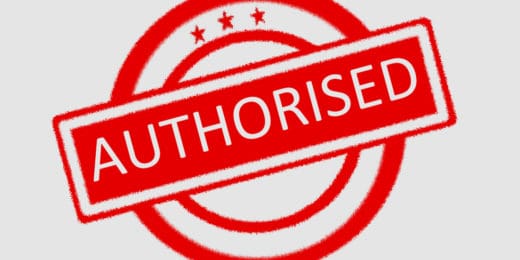Illegal dividends arise when a company has insufficient distributable profit to cover the sums of money it has chosen to pay to shareholders or when a company does not follow the correct procedure for declaring dividends. Directors need to take great care when issuing dividends to avoid making such unlawful payments.
Per the rules set out in section 830 of the Companies Act 2006, a company is only permitted to issue dividends or make other distributions to shareholders out of post-tax profits that are available for such purposes.
Let’s take a look at what this means, the common pitfalls that can lead to illegal dividends, and the consequences that a company and its shareholders may face if they find themselves in this unfortunate situation.
Key Takeaways
- Illegal dividends are dividends a company pays out that exceed its distributable profits. This is a breach of section 830 of the Companies Act 2006 and can have financial and legal consequences for directors and shareholders.
- To avoid unlawful dividends, directors must calculate distributable profits accurately using realised profits from relevant accounts and consider future liabilities, cash flow, and proper documentation.
- The consequences of issuing illegal dividends include potential repayment by shareholders, HMRC penalties, and personal liability for directors, especially if the company becomes insolvent or fails to recover funds.
What are illegal dividends?
Shareholders receive profits from a company in the form of dividend payments. The amounts payable depend on how much profit is available for distribution and how much of the company each shareholder owns.
Issuing dividends is usually a simple process in small companies. However, sometimes mistakes are made and a company declares (issues) dividends that exceed the value of profits available for distribution.
When this happens, you end up with illegal dividends, also known as unlawful dividends or unlawful distributions. Whilst not a criminal offence, there may be consequences for the company and any shareholders in receipt of such payments.
The Companies Act (section 830) states that “[a] company’s profits available for distribution are its accumulated, realised profits, so far as not previously utilised by distribution or capitalisation, less its accumulated, realised losses, so far as not previously written off in a reduction or reorganisation of capital duly made.”
To put this in more simple terms, dividend payments can only be made from the realised profits that remain after the company has accounted for all business losses, costs, expenses, and taxes due. If there is no money left after taking all of these things into consideration, dividends must not be paid.
Realised profits are profits that a company has actually received – e.g. income earned from trading or selling assets. Unrealised profit, on the other hand, is profit that is not currently available for distribution – e.g. assets held by the company that have increased in value.
How to work out if your company has distributable profits
Distributable profits are worked out by adding the sales, less expenses, less Corporation Tax (and VAT, if applicable) for the current financial year to the profit and loss account reserves in the last set of accounts.
Therefore, the company should always avoid basing dividend payments on the bank balance. Having cash in the bank doesn’t necessarily mean that the company has distributable profits, yet this is one of the most common causes of illegal dividends.
The Companies Act 2006 (section 836) states that directors must check the ‘relevant accounts’ to determine if there is sufficient profit available for distribution (distributable reserves). The relevant accounts are the company’s most recent annual accounts.
However, if you are issuing interim dividends (dividends that are not the final end-of-financial-year dividends prepared when the annual accounts have been finalised), interim or management accounts may be regarded as the relevant accounts – or initial accounts, if your company is new and you are issuing interim dividends before the end of your first financial year.
This means that, when issuing final dividends at the end of the company’s financial year, you must use the annual accounts for that year. The balance sheet in the accounts will show whether or not the company has the necessary funds to pay dividends.
When issuing interim dividends during the financial year, rather than at the end, you should ideally prepare interim accounts – or initial accounts, if you’re in the first year of trading.
Whilst you can reference the last annual accounts for interim dividends, there is risk in doing so, because the financial position of the company may have changed since then. If you plan to issue interim dividends, maintaining up-to-date and complete bookkeeping records will enable you to quickly prepare initial or interim accounts whenever required.
That being said, the accounts are just one part of the equation. You must also consider the wider picture when deciding whether to issue dividends.
This includes the immediate impact on the company’s cash flow, the ability to continue paying debts as they fall due, and any planned or potential changes that are likely to affect the company’s financial position in the near future.
Steps for declaring dividends lawfully
Declaring dividends lawfully is a straightforward process, but it requires strict adherence to legal and administrative procedures to ensure compliance with the Companies Act 2006. Here are the key steps typically required to declare and pay a dividend:
1. Prepare the relevant accounts
Before declaring dividends, the directors must review the company’s relevant accounts. For final dividends, this typically means the annual accounts, while for interim dividends, directors should prepare up-to-date interim accounts or management accounts.
These accounts must clearly show whether the company has sufficient distributable profits available after accounting for all expenses, taxes, and liabilities. Without this calculation, there is a significant risk of issuing illegal dividends.
2. Approve the dividend
The board should then approve the dividend – this is usually takes place at a board meeting. During this meeting, the directors should review the relevant accounts, discuss the company’s financial position, and agree on the amount of dividend to declare.
Normally, if the proposed dividend is an interim dividend, then the director’s authority alone is sufficient to approve it. However, if the dividend is a final dividend, the shareholders will then usually need to approve the dividend, either at a general meeting or by written shareholder resolution.
This step is crucial for maintaining proper governance and for providing an official record of the decision, which may be required in the event of an audit or HMRC investigation.
3. Issue a dividend voucher
Once the dividend has been approved, the company should prepare dividend vouchers for each shareholder. This document serves as a receipt for tax purposes and must include:
- The company’s name and registration number.
- The shareholder’s name.
- The amount of the dividend.
- The date of payment.
- The dividend rate per share.
Providing dividend vouchers ensures transparency for shareholders and demonstrates that the company is meeting its tax reporting obligations. Find out more about how to do this in our guide to dividend vouchers.

If you’re looking to issue shares to someone so they can receive dividends, check out our Issue of Shares Service. We can complete and send you all the necessary documents, including the application letter, board resolution, written special resolution, and share certificate(s). We will also file the form SH01 at Companies House and, if required, file a confirmation statement to report the recipients of the new shares publicly.
Situations that can lead to unlawful dividends
Illegal dividends are not uncommon, particularly in small family firms and owner-managed companies. It’s easier than you may realise to inadvertently pay unlawful dividends to yourself or other shareholders, but you should always try to avoid this situation.
Here are some of the most common mistakes that result in the payment of illegal dividends.
Financial miscalculations:
- Failing to ensure the company has sufficient distributable reserves to cover the dividend payments
- Miscalculating profits or using an incorrect figure in the accounts
- Failing to consider the company’s future and contingent liabilities when assessing its solvency
Failure to follow proper procedures:
- Issuing dividends without referring to the relevant accounts
- Failing to keep minutes of board meetings or general meetings at which dividends are declared
- Not passing a resolution of either the directors or shareholders to authorise the dividends
- Backdating authorisation paperwork (e.g. minutes of board meetings; shareholders’ resolutions) for previously issued dividends
Other reasons, including:
- Paying unequal dividends to shareholders of the same class
- Issuing dividends when the company is insolvent
As you can see, poor record-keeping and administrative practices can lead to unlawful dividends just as easily as accounting errors and deliberate wrongdoing.
Even if you are the sole director and shareholder of your company, you must follow all of these rules and requirements when issuing dividends to yourself – even keeping minutes of meetings at which only you are present.
Consequences of issuing illegal dividends
If you declare dividends that exceed the company’s retained profits, you cannot cancel them. Instead, HMRC is likely to treat the illegal dividend as a ‘loan’ from the company to the shareholder.
As per section 847 of the Companies Act 2006, if the recipient knows or should have known that the dividend payment (or part thereof) is illegal, they are liable to repay the amount of the dividend (or the proportion that exceeds available profit) back to the company.
Claiming lack of awareness or knowledge of the rules is not considered a reasonable excuse, particularly if the shareholder is also a director.
HMRC’s Company Taxation Manual states that “when dealing with private companies controlled by directors who are shareholders, such a member ought to know the status of the dividend and it is expected that section 847 will apply in the majority of such cases.”
Therefore, immunity from liability to repay an unlawful dividend will typically apply only to shareholders in quoted companies, who could not reasonably be expected to know the status of the dividend.
Repaying dividend income
If a shareholder does not repay the money within nine months and one day of the end of the accounting period in which the dividend was made, it will be treated as a ‘benefit in kind’ under the rules for taxable loans to employees.
The company will be subject to a ‘section 455’ Corporation Tax charge of 33.75% of the repayable amount for any loan made after 6 April 2022. A notional interest rate (currently 3.75%) will also apply if the loan is greater than £10,000 at any time in the tax year.
HMRC will repay the s.455 tax charge nine months and one day after the end of the Corporation Tax accounting period in which the illegal dividend amount is repaid to (or written off by) the company.
If the company writes off the loan, it will need to pay employer’s Class 1A National Insurance through payroll. The shareholder will also be required to report the income in their Self Assessment tax return.
Directors can also be held personally liable if they authorise an illegal dividend and the company is unable to recover the funds from the recipient shareholder.
Other potential consequences
In certain situations, illegal dividends can lead to a negative balance on the balance sheet in the company’s accounts.
This can make a company appear insolvent, which could be problematic when trying to secure credit from lenders or suppliers.
It could also trigger an investigation by HMRC, which is not something that any business wants to deal with.
What happens if a company becomes insolvent after paying illegal dividends
If a company becomes insolvent after paying illegal dividends, the company, its shareholders, and directors may face significant consequences.
When a company enters insolvency, an insolvency practitioner will investigate its financial history, including the circumstances of the illegal dividends. Their role is to recover funds for creditors, often by reclaiming payments from shareholders or directors.
Shareholders who received the illegal payments may be required to repay the amounts if it’s determined that they knew, or should have reasonably known, the dividends were unlawful.
Directors who authorised the illegal dividends can face personal liability if the company is unable to recover the funds from shareholders. Insolvency practitioners may hold directors accountable for breaching their fiduciary duties, and this could lead to financial penalties or even disqualification from acting as a director in the future.
Illegal dividends can also reduce the pool of funds available to creditors, increasing the likelihood of legal action against those responsible. This process can further strain the company’s financial position and delay resolving outstanding debts.
Why do companies issue dividends?
Companies issue dividends to distribute profit to shareholders as a reward for their ownership and investment in the business. Learn more in our guide on how dividends work in a private limited company.
If you are a shareholder and director of a company, receiving some of your income in the form of dividend payments is more tax-efficient than taking all of your income as a director’s salary. This is because:
- Dividend tax rates are lower than Income Tax rates
- Shareholders enjoy a tax-free dividend allowance of £500 per year
- You don’t have to pay National Insurance contributions on dividend income
For these reasons, most company owners pay themselves a low director’s salary on a monthly basis and take dividends as and when profits allow.
Thanks for reading
Whilst issuing dividends can be relatively straightforward in a small company, there is room for error if you are unfamiliar with the process and requirements.
To avoid declaring illegal dividends and having to deal with the administrative headache of rectifying the issue, you may find it beneficial to appoint an accountant. They will be able to assess whether the company is in a position to pay dividends, advise on the most tax-efficient salary and dividend structure to suit your needs and assist with the necessary paperwork and accounting requirements.
If you have any questions about this post or would like to speak to someone about any other aspect of running a limited company, please leave a comment below or get in touch with our company formation team.
Check out our other Rapid Formations blogs for more helpful information on running a company.
Please note that the information provided in this article is for general informational purposes only and does not constitute legal, tax, or professional advice. While our aim is that the content is accurate and up to date, it should not be relied upon as a substitute for tailored advice from qualified professionals. We strongly recommend that you seek independent legal and tax advice specific to your circumstances before acting on any information contained in this article. We accept no responsibility or liability for any loss or damage that may result from your reliance on the information provided in this article. Use of the information contained in this article is entirely at your own risk.












Join The Discussion